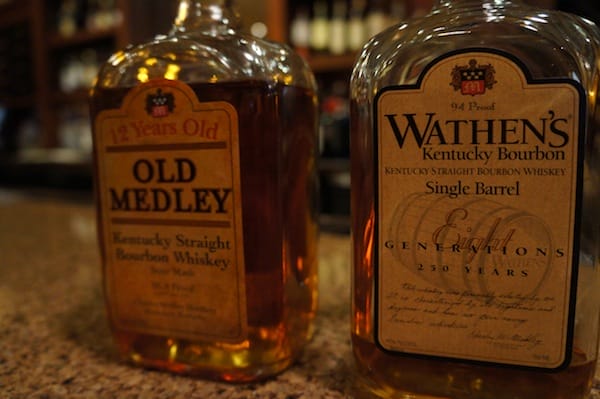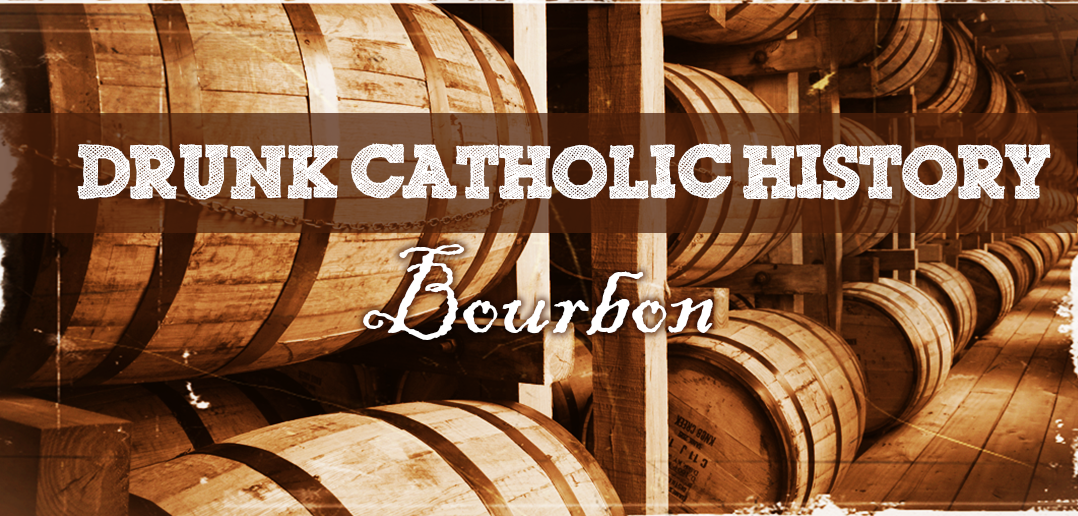
We Catholics have quite an affinity for recreational alcohol use. Blame it on the wedding at Cana (Jn 2:1-10), the Last Supper (Lk 22:17-20) or the precious blood we celebrate at the Most Holy Sacrifice of the Mass (1 Cor 11:20-29), but we use potent potables as both a Sacrament and a sacramental in our liturgical and cultural celebrations, respectively. Both religious and lay Catholics have a long history of making wine, brewing beer, distilling spirits, and aging flavored liqueurs. Denizens of the Internet are likely familiar with the web (and now television) series, Drunk History. What those inebriated historians of comic lore likely fail to realize is that — as with much of the Western culture they enjoy — their favorite intoxicant quite likely finds its origins in Catholic hands. In this new recurring feature on OnePeterFive, I will use Drunk Catholic History to reflect on how fermented beverages have enriched the cultural heritage of Holy Mother Church. I am a mere home enthusiast when it comes to enjoying beer, wine, and liquors, but I hope to connect you with some of this richness Catholics have enjoyed for millennia.
We could start anywhere in Drunk Catholic History — for example, the Benedictine monk who helped refine the technique to make Champagne; Cistercian monks who finance their monastic mission by making and selling a particular ale; or a certain Rhône winemaking region with a papal heritage — but today I want to start with the bourbon whiskey. [Full disclosure: I loooooooooove bourbon.] Bourbon is a distinctly American whiskey. Made primarily from corn, what gives bourbon its distinctive taste and color is the aging of the whiskey in oak barrels which have been fire-charred on the inside, lending the spirit a uniquely smoky flavor. But how did Bourbon come to be, and what did it have to do with Catholics?
The English Reformation brutally devastated Catholic culture and suppressed the practice of the sacraments. George Calvert, an Anglican born into this controversial era, rose to prominence when he was sent by the crown to Ireland to ensure that Catholic Church institutions were being successfully dismantled and merged into the new Church of England. Though Calvert originally courted favor with James I and became his Secretary of State, he became politically unpopular due to his advocacy for a strong royal alliance with Spain and the Hapsburg house, which still ruled the Holy Roman Empire. When these plans failed and he had little left to lose politically, he renounced his position as Secretary of State and announced publicly that he had converted to the Catholic faith. Though his influence waned, he was still favored by James I, who granted him the royal title of Baron Baltimore. When Charles I ascended the throne, showing increasing hostility toward Catholics, Calvert moved to Ireland to avoid persecution, and later to a colony called Avalon that he had established in Newfoundland.
In Avalon, Calvert allowed Catholics freedom of worship, inviting suspicion from an Anglican priest who reported back to the crown about this violation of the Privy Council’s wishes. Due to harsh weather and fisheries devastated by war with France, the Avalon colony suffered greatly and caused Calvert to request a different colony in a more favorable climate. He was first granted a colony near Jamestown, settled by Anglicans quite hostile toward Calvert’s chosen Catholicism. He refused to sign an oath of loyalty to Anglicanism and immediately requested a different colony immediately north where he would not have religious conflict with Jamestown. Though successful in his request, he died just five months before Maryland’s charter was signed in 1632. Though there is some controversy whether Maryland was named by Calvert for the Blessed Virgin Mary or for Queen Henrietta Maria of France (mother of King Charles II), the colony seat of St. Mary’s clearly traces its namesake to Our Lady. Calvert’s dream of a colony with religious tolerance for Catholics became reality, and Maryland became financially successful in the export of tobacco.
Through a series of struggles, religious tolerance for Trinitarian Christians became law in 1649 with the Maryland Toleration Act. This protected Catholics and Protestants worshiping in their own rites publicly in their own houses of worship until 1692, when Catholics lost the right to vote and were forced to worship only within their homes. The prior colonial capital of St. Mary’s was relocated by the Protestants and the old statehouse in St. Mary’s was seized and converted into a Protestant church. Maryland would later become one of the original 13 colonies in the United States and represented the largest concentration of Catholics in the colonies. Between 1692 and the American Revolution, Catholics practiced their faith in secrecy or in hidden chapels on the land of wealthy Catholic landowners. Catholic persecution continued in Maryland until the 1830s when anti-Catholic laws were finally abolished.
Still with me? Maybe now is a good time to pause for a sip of Basil Hayden’s bourbon, one of my favorites.

Returning to England, the Heydon family enjoyed a heritage that went back to the Richard the Lionheart’s Third Crusade to the Holy Land. The family lived on their estate near Watford northeast of London from the estate’s founding in 1400 until after the English Civil War and Cromwell’s Puritan military dictatorship. After Cromwell’s death, Charles II led the restoration of the monarchy but under harsh compromises with a parliament fiercely loyal to the Church of England. The 1660s ushered in a series of parliamentary acts called the Clarendon Code to strictly enforce the practice of Anglicanism and prohibit all other Christian practice. To escape this persecution, the Heydon family left their historic estate and settled in the Jamestown colony in the 1660s. Changing the spelling of their name to “Hayden”, they later moved north to St. Mary’s in 1678 for more freedom to practice their Catholic faith.
The Haydens clung to their life in Maryland until 1785 when they led a group of 25 Catholic families who moved from Maryland and settled near what became Bardstown, Kentucky. The family’s patriarch at the time, Basil Hayden Sr., made his own whiskey, among other pioneer enterprises. Hayden built the first Catholic chapel on the fledgling US frontier, Holy Cross, on his own land in 1790. Hayden later donated land as a site for St. Joseph’s in Bardstown, the first Catholic cathedral west of the Alleghenies. Basil Hayden’s grandson Raymond later went on to establish a distillery in Nelson County, Kentucky where he named his whiskey “Old Grand-Dad” in honor of his grandfather. (Basil Hayden Sr.’s image still appears on every label of Old Grand-Dad today.)

The Haydens were not the only Catholic name in Kentucky whiskey. The Medley family was also one of the original 25 Catholic families to move from Maryland to Kentucky in 1785, and at the time the family was headed by patriarch John Medley. His great-grandson George Medley later moved the clan from Bardstown 100 miles west to Owensboro, Kentucky. George’s son married into the Wathen family, who were also Catholics active in Kentucky whiskey.

Sadly, the original distillery operated by the Wathen-Medley family shut down in 1992. Although the bourbon labels of Wathen and Medley were recently sold to other companies in 2007, I have heard rumors that these labels have now been discontinued. However, my local whiskey bar of choice still stocks Old Medley 12 year, a delightful bourbon.
The other Catholic families active in making whiskey? Perhaps you have heard of Jim Beam, J.W. Dant, Lord Calvert, or my personal favorite, Willett. The Willett family moved from Maryland to Kentucky in 1792. One of the Willett family is listed as an architect of St. Joseph Proto-Cathedral in Bardstown.

The Catholic whiskey heritage in Kentucky continues today in the diocese of Owensboro, where in 2009 Pope Benedict XVI appointed William Francis Medley as bishop of the Medley family’s home diocese. Bishop Medley holds a theology degree from St. Meinrad in Indiana and previously served as pastor for historic St. Joseph in Bardstown. Raise a glass of Kentucky’s finest to Bishop Medley and the rich Catholic history in American bourbon whiskey — may God grant him many years!


